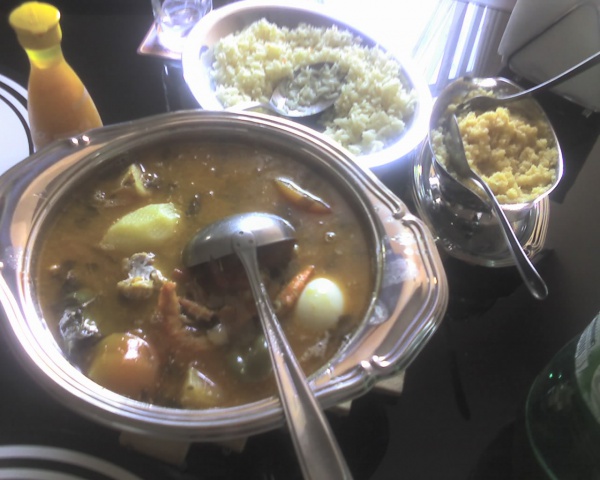Facts About Caldeirada
Caldeirada is a cherished fish stew originating from Portugal and Galicia, renowned for its rich blend of fish, potatoes, and a variety of other ingredients. This traditional dish is a favorite among fishermen and showcases diverse flavors that vary from town to town, influenced by the day's fresh catch. If you delight in fish stews like bouillabaisse, kakavia, zarzuela, or cacciucco, you will likely find caldeirada equally appealing.
The charm of caldeirada lies in its adaptability. Recipes typically call for a mix of lean and oily fish, complemented by shellfish such as clams and mussels, and occasionally by squid or octopus. Common fish choices include mackerel, swordfish, tuna, cod, monkfish, hake, flounder, and haddock. The stew is often enriched with vegetables and seasoned with an array of herbs and spices, including potatoes, onions, peppers, tomatoes, bay leaves, coriander, paprika, oregano, and a splash of wine.
There are numerous variations to explore—some versions might feature conger eel, angel shark, sea bass, sea bream, red gurnard, sardines, ray, shrimp, and additional clams. Each serving is typically generous with fish and can be paired with vermicelli, a drizzle of olive oil, allspice, or even a touch of brandy or whiskey. Interestingly, some recipes forego added salt entirely, as the shellfish impart their own natural salinity to the dish.
Caldeirada is not limited to Portugal and Galicia; it has also gained popularity in Brazil, a former Portuguese colony. In Brazilian kitchens, it is often transformed into an aromatic chowder made with river fish and an abundance of coriander. Whether in Europe or South America, caldeirada's rich, adaptable flavors make it a beloved part of the seafood stew tradition.

 Spain
Spain